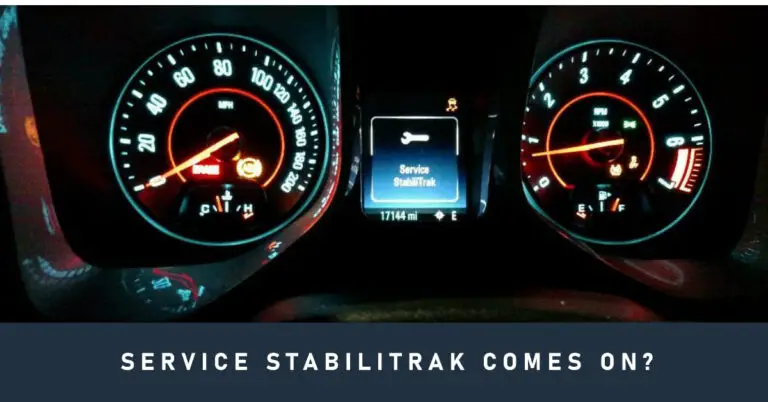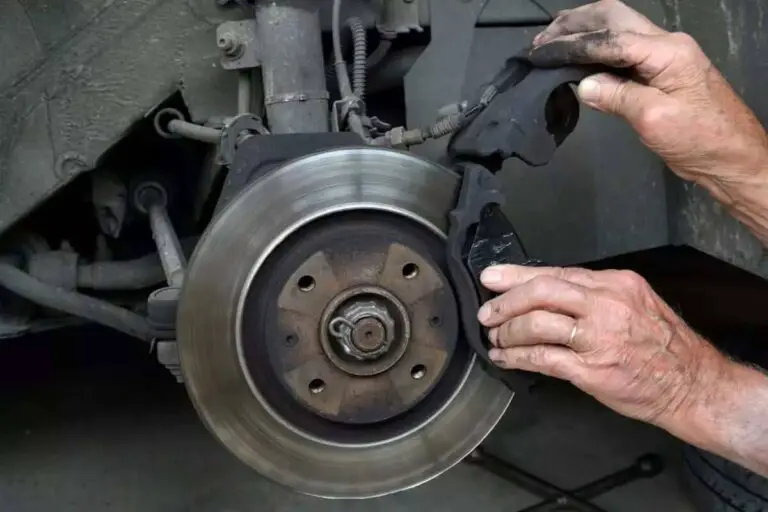Cars Safety Mastery Guide

Safety should be the number one priority for all drivers. When you’re behind the wheel of a multi-ton vehicle traveling at high speeds, even a small mistake can have catastrophic consequences. That’s why it’s critical that you educate yourself on all aspects of automotive safety and make smart choices whenever you drive.
This mastery guide will provide you with a comprehensive overview of vehicle safety, including the latest technology, proper driving techniques, and how to choose the safest car for your needs. With the knowledge in this guide, you’ll be well on your way to becoming an expert on staying safe on the road.
Table of Contents
Active Safety Features
Active safety features help drivers avoid accidents in the first place by giving warnings and even taking automatic action. They use technologies like sensors, cameras, and computing power to monitor the vehicle environment and make split-second decisions faster than human reaction times. Here are some of the most important active safety features in modern vehicles:
Anti-Lock Brakes
Anti-lock braking systems (ABS) pulse the brakes many times per second to prevent wheels from locking up and losing traction during hard braking situations. This allows the driver to maintain control of steering even in emergency braking. ABS is essential for maintaining maneuverability in hazardous conditions.
Traction Control
Traction control works in conjunction with ABS to reduce wheel spin and loss of grip. If sensors detect a drive wheel losing traction, the system automatically brakes that wheel to redistribute torque to wheels with more grip. Traction control gives stability when accelerating on slippery surfaces.
Electronic Stability Control
Electronic stability control (ESC) detects loss of control and automatically brakes individual wheels and reduces engine power to keep the car stable and heading in the intended direction. ESC helps correct oversteer or understeer scenarios to avoid spinouts or rollovers. It’s one of the most significant safety advances in recent decades.
Lane Departure Warning
Lane departure warning uses a front camera to detect if the car is drifting out of the lane without a turn signal on. It will alert the driver through visual, audible, and/or haptic warnings so they can steer back into the proper lane. This prevents run-off-the-road accidents.
Blind Spot Monitoring
Blind spot monitoring uses rear-facing radar sensors to detect vehicles in hard-to-see blind spots. A visual alert on the side mirrors or instrument cluster indicates when another vehicle is next to you so you can avoid hazardous lane changes. More advanced systems even apply torque to the steering wheel to dissuade unsafe lane changes.
Forward Collision Warning
Forward collision warning uses a front radar or camera to determine if the vehicle is at risk of an imminent frontal crash. It provides a visual, audible, or haptic alert, giving the driver extra time to react and brake. Some systems even pre-charge brakes or apply autonomous braking to mitigate impact forces.
Pedestrian Detection
Pedestrian detection uses cameras and radar to identify people around the vehicle. If a pedestrian collision is deemed likely, it provides alerts and may activate emergency braking. This is critical for safety in urban environments. Some systems can even detect pedestrians at night.
Adaptive Headlights
Adaptive headlights aim the high beam lights around detected vehicles to maximize illumination ahead without blinding or distracting other drivers. This allows drivers to anticipate hazards earlier at night.
Driver Monitoring
Driver monitoring systems use interior cameras and sensors to assess if the driver is drowsy, distracted, or incapacitated by watching their head position, eye movements, and steering corrections. The car can provide alerts if the driver seems impaired or even perform a safe stop if necessary.
Passive Safety Features
While active safety features help avoid crashes, passive safety features aim to protect occupants during a crash by preventing injuries and fatalities. Here are important passive safety systems:
Airbags
Airbags cushion front occupants in frontal collisions and side airbags protect in side impacts. Newer cars add knee airbags, rear airbags, and inflatable seatbelts to cover more crash scenarios. Advanced systems tailor airbag deployment force and timing based on crash sensors and occupant weight and position.
Advanced Seatbelts
Motorized seatbelt pretensioners instantly tighten belts in a crash while load limiters allow some stretch to reduce chest injuries in high forces. Newer active seatbelts move with the seats to properly restrain occupants before impact.
Safety Cell/Crumple Zones
The rigid passenger safety cell maintains its structure to protect occupants while crumple zones around the car collapse and absorb impact forces. High strength steel, reinforced structures, and optimal crush geometry provide good crash energy management.
Compatibility Design
Vehicle front ends are designed to better align with the safety structures of other vehicles, increasing the changes both vehicles manage crash forces effectively. This reduces injuries in frontal crashes between vehicles of different sizes and heights.
Pedestrian Impact Mitigation
Energy absorbing bumpers, hoods with clearance, and exterior airbags help mitigate pedestrian injuries in impacts. Some autonomous emergency braking systems are tuned specifically to brake more aggressively to reduce injury severity if a pedestrian is detected.
Child Safety Features
LATCH anchors for car seats, power deactivation for airbags next to children, and automatic rear door locks prevent injury and entrapment of children. Newer vehicles even have alerts or won’t shift out of park if a rear seat is occupied before starting.
Post-Crash Systems
Post-crash notification systems can automatically call emergency services and notify first responders if airbags deploy. Automatic fuel cutoff switches, battery cutoffs, and door unlocking minimize fire and entrapment risks after a crash.
Driver Assistance Technologies
The latest driver assistance technologies act as “co-pilots” to give warnings about hazards, assist with monotonous driving tasks, and even take over some limited driving functions automatically. These features include:
Adaptive Cruise Control
Adaptive cruise uses radar to detect the speed of ahead vehicles and automatically adjust speed to maintain a safe following distance without driver intervention. This eases highway driving and prevents rear-end collisions due to distraction.
Automated Emergency Braking
Available emergency braking systems detect impending forward collisions with vehicles or pedestrians and can automatically brake harder than humanly possible to avoid crashes in situations where the driver doesn’t respond to warnings.
Lane Keeping Assist
Lane keeping assist gently steers the vehicle back into the lane if drifting is detected without a turn signal. This prevents accidents if the driver loses focus momentarily or is distracted.
Traffic Jam Assist
Traffic jam assist combines adaptive cruise control and lane centering to automatically accelerate, brake, and steer in heavy traffic scenarios on the highway at lower speeds. This allows the driver to relax in stop-and-go congestion.
Parking Assist
Park assist systems use cameras and proximity sensors to automatically steer the car into parallel or perpendicular spaces, relieving parking stress for drivers. More advanced systems even allow remote parking without the driver.
Driver Monitoring Systems
Driver monitoring cameras, steering sensors, and driver-facing interior radar keep tabs on head position, gaze direction, and alertness levels to warn if the driver seems distracted or sleepy. These promote attentiveness.
Night Vision Systems
Far infrared night vision cameras detect pedestrians and animals beyond the reach of headlights, then display them on the instrument cluster or head-up display so the driver can react earlier. This improves safety at night.
Intersection Assist
Some systems recognize intersections and cross-traffic hazards. They warn if a collision is likely and may even brake autonomously if the driver doesn’t respond. Intersection assist prevents common side-impact crashes.
Choosing the Safest Car
Shopping for a car with the latest safety ratings and technologies greatly reduces your risk on the road. Follow these tips for choosing a safe vehicle:
- Check NHTSA 5-star crash test and IIHS Top Safety Pick ratings. 5 stars or TSP status indicates top-tier safety.
- Prioritize active safety features like automatic emergency braking, blind spot monitoring, and adaptive headlights. They actively help avoid crashes.
- Don’t skimp on airbags. Front, side, and curtain airbags are the minimum. Knee airbags, rear airbags, and inflatable seatbelts are even better.
- Look for strong crash test performance specifically in the small overlap front crash test, side pole test, and roof strength test. Many cars fall short in these evaluations.
- Consider larger vehicle size classes. Larger and heavier vehicles inherently provide more occupant protection in crashes, all else being equal.
- Verify advanced crash avoidance technologies like night vision, intersection assist, lane keeping assist, and parking sensors are available. Test them thoroughly on a real drive.
- Check rear seat reminder alerts, child safety seat anchors, and power deactivate switches for child safety. Locking rear doors are also ideal.
- Look for post-crash notification systems and fuel cutoff switches. These can save lives after a collision occurs.
- Remember used vehicles can have safety tech too! 1-2 year old used vehicles offer great value with the latest technologies.
Safe Driving Practices
While vehicle technology is critical, the most important safety feature is an alert, skilled driver practicing safe habits. Follow these expert driving tips:
- Keep your eyes up and actively scan for hazards instead of just staring straight ahead. Look at least 10-15 seconds ahead of your vehicle.
- Drive defensively and assume other road users will make mistakes. Give yourself extra space and have an “out” ready.
- Resist distractions. Never text, make phone calls, eat, or take your eyes off the road for more than 2 seconds at a time.
- Leave at least a 3 second following distance at highway speeds. More space is needed in poor conditions. Use the “3 second rule” to check.
- Slow down, especially on higher speed roads. Obey speed limits and adjust for conditions. Speed is frequently the top factor in fatal crashes.
- Signal all turns and lane changes well in advance so other drivers can react. Don’t rely just on your mirrors – turn your head to check blind spots.
- Be very cautious and slow down around stopped emergency vehicles, construction zones, and intersections. These areas have high crash rates.
- Come to a complete stop at stop signs and check both ways for crossing traffic before proceeding, even if you have the right of way.
- Use extra caution around large trucks and trailers. Avoid their large blind spots and give them plenty of stopping distance.
- Stay focused on driving and don’t get lost in conversations with passengers that distract you. Keep chatting light.
- Never drive impaired or drowsy. Driving under the influence of alcohol, drugs, or when excessively tired is extremely reckless and dangerous.
- Check your tire pressures and tread depth monthly. Replace worn tires promptly since they affect steering, braking, and handling.
- Have regular maintenance done according to your owner’s manual schedule. Critical components like brakes and lights impact safety.
Following safe driving practices is just as important as advanced vehicle technology when it comes to avoiding accidents. Mindfulness, attention, and good judgment are key to protecting yourself and fellow road users.
Conclusion
We’ve covered a tremendous amount of vehicle safety technology, crash protection engineering, and safe driving techniques in this guide. While it’s impossible to eliminate all risks on the road, arming yourself with safety knowledge goes a long way.
Understanding both the capabilities and limitations of vehicle safety systems allows you to make smart choices and drive in the safest manner possible. Refer back to this guide whenever you need a quick refresher on reducing your risk. And remember to prioritize safety not just for yourself, but for everyone sharing the roads. Safe travels!







